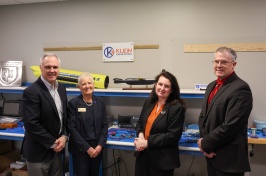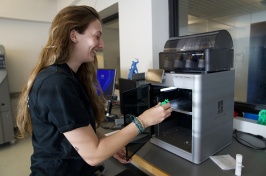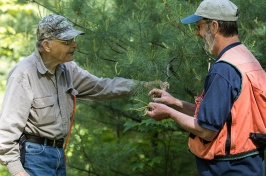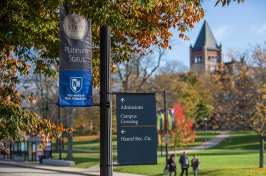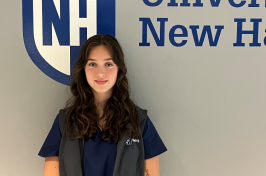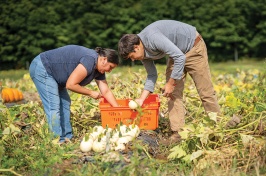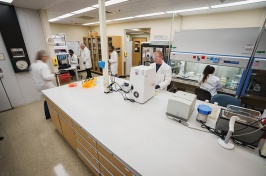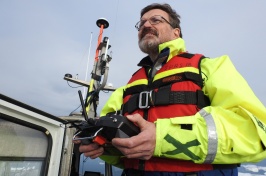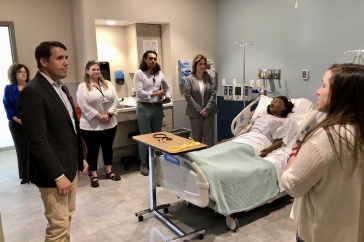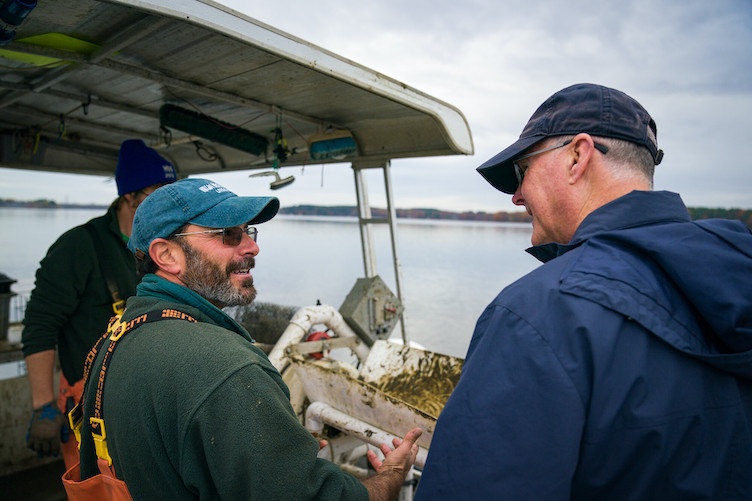
Brian Gennaco, founder of the Virgin Oyster Co., talks with UNH President Jim Dean on the waters of Great Bay.
UNH research and outreach helped revitalize New Hampshire’s commercial oyster aquaculture industry over the past decade. Now, the state has turned to UNH researchers to ensure diners stay healthy while enjoying these briny bivalves. This story was originally produced by the New Hampshire Bulletin, an independent local newsroom that allows UNH Today and other outlets to republish its reporting.
By Hadley Barndollar - New Hampshire Bulletin
Plump, briny oysters harvested in New Hampshire are finding their way onto more menus, and state officials say it’s time to start evaluating the risk for a naturally occurring bacteria that’s made headlines elsewhere.
The Department of Environmental Services is contracting with a University of New Hampshire laboratory to test oysters for Vibrio parahaemolyticus, a gastrointestinal illness associated with the consumption of raw shellfish. According to the Centers for Disease Control and Prevention, the bacteria, which naturally inhabits coastal waters where oysters live, can cause diarrhea, abdominal cramps, nausea, vomiting, fever, and headaches that last between one and seven days.
The call for testing comes as people in New Hampshire are eating more local oysters. In recent years, the Granite State’s commercial oyster aquaculture industry has grown substantially, from two licensed sites in 2010 to 32 in 2023. Oysters have made a significant comeback in Great Bay, which is designated as one of 28 estuaries of national significance by the Environmental Protection Agency’s National Estuary Program.
DES officials say an evaluation of current bacteria levels in New Hampshire oysters is needed to “develop baseline information, assess risk, and inform management strategies to help mitigate the risk to protect shellfish consumers as well as the shellfish industry.”
As approved by the Executive Council Wednesday, the state will contract with UNH’s Department of Natural Resources and Marine Science to test and analyze oyster samples collected as part of an interagency monitoring program this summer and fall. In its request for funding, DES wrote that raw shellfish consumers are at the greatest risk for becoming ill in the warmer summer months when the bacteria seems to be more prevalent.
Vibrio-related illness outbreaks have been traced to shellfish harvest areas in Massachusetts and Connecticut. Massachusetts now has a Vibrio Control Plan that tracks the conditions of oyster harvests in the state.
New Hampshire has not yet experienced any Vibrio-related illnesses, and UNH’s Cheryl Whistler, a professor of molecular, cellular, and biomedical science, is investigating if that’s because of the state’s policy to prevent the importing of oyster seed from areas affected by a virulent strain of Vibrio. She’s also looking at mitigation and detection measures to strengthen resiliency of the state’s growing aquaculture industry.
New Hampshire Bulletin is part of States Newsroom, a network of news bureaus supported by grants and a coalition of donors as a 501c(3) public charity. New Hampshire Bulletin maintains editorial independence. Contact Editor Dana Wormald for questions: info@newhampshirebulletin.com.







